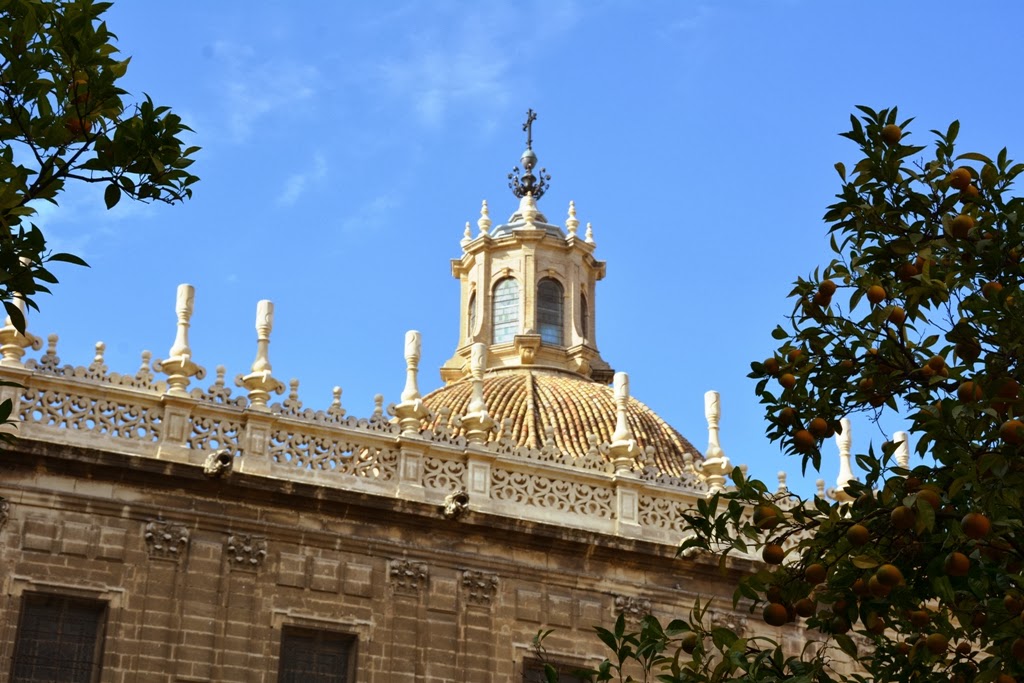That this is one of the largest churches in the world is clear as soon as you enter. The arched ceilings are so high that you are intimidated. How did they ever build such a construction more than five centuries ago?
Facing the mid ship and wall in front of us, we see a giant organ. At first sight we thought there was a mirror because we saw two organs. It was not a visual effect; there are really two giant organs around the fabulous wooden carved choir. Other interesting pieces of art in the church are a silver altar, wooden altars, a silver fresco wall and many beautiful paintings.
At the end of our tour we see four big men in ancient soldier uniform carry a coffin. These are the remains of Christoffel Columbus. Many countries and churches claim to have remains of this Spanish adventurer who discovered the new world but in Sevilla it is scientifically verified. Columbus is here, at least a part.
Dat dit één van de grootste kerken ter wereld is wordt duidelijk van zodra je binnen gaat. De booggewelven zijn zo hoog dat je wordt geïntimideerd. Hoe hebben ze dit ooit opgetrokken meer dan vijf eeuwen geleden?
Kijkende naar het middenschip en de muur voor ons zien we een enorm orgel. Eerst dachten we dat er een spiegelreflectie was want we zagen er in feite twee. Beide reuze orgels stonden er echt tegen het in hout gekerfde koor. Andere interessante kunstvoorwerpen in de kerk zijn het zilveren altaar, houten altaars, een zilveren fresco muur en vele mooie schilderijen.
Aan het eind van onze tour stonden vier soldaten in antieke uniformen. Op hun schouders rust een kist. Dit zijn de overblijfselen van Christoffel Columbus. Vele plaatsen en kerken beweren ze een graf van deze Spaanse ontdekker van de Nieuwe Wereld te hebben maar hier in Sevilla is dit wetenschappelijk gecontroleerd. Columbus is hier, althans een stukje van hem.
Previous Sevilla article:
Cocktail of cultures and religions in Santa Cruz, Sevilla
Previous Church article:
The exterior of the cathedral of Sevilla with its crocodile
Return to main page
Observing
3 hours ago



























































